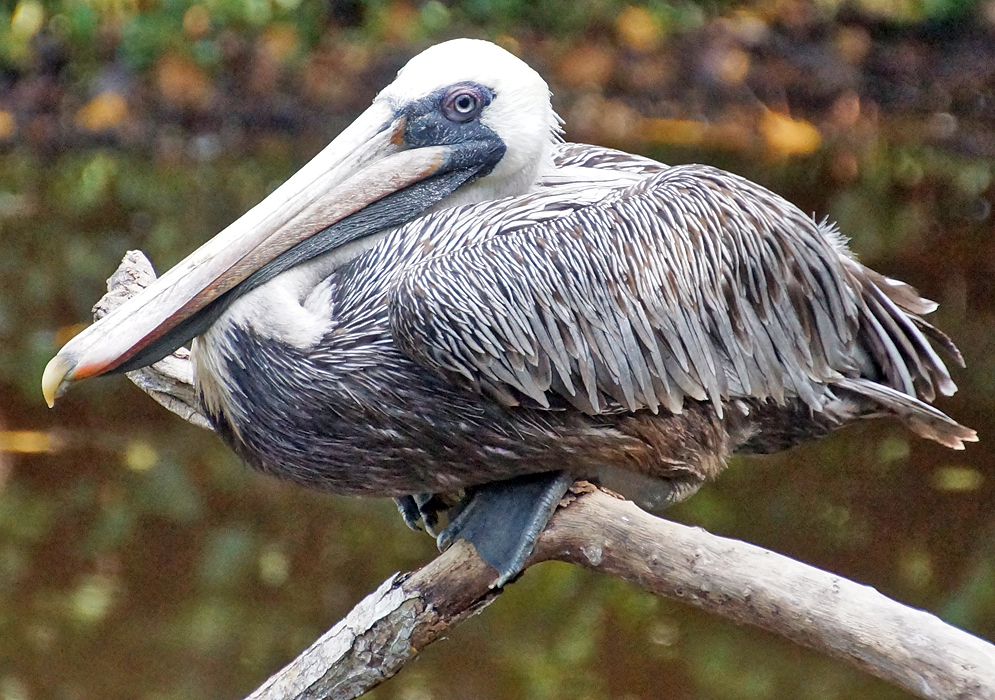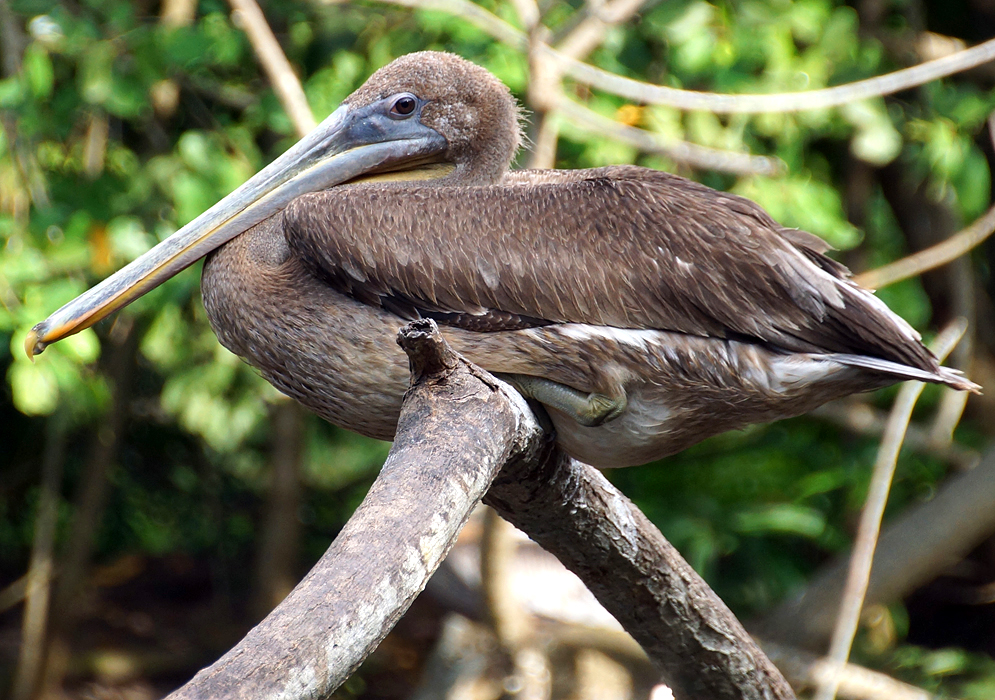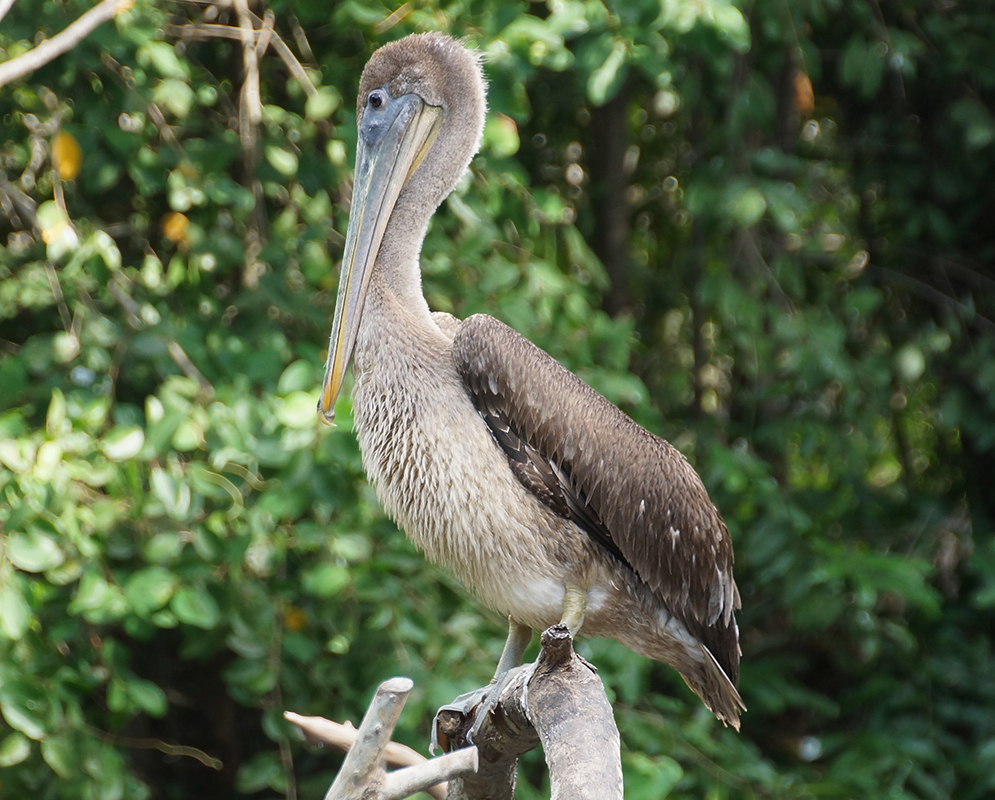This post has 11 Simple Fields-fields attached. Show fields.

The Brown Pelican inhabits warm, shallow waters in both the Pacific and Atlantic oceans, specifically in the nearctic and neotropical regions. They are predominantly coastal birds, rarely found more than 20 miles from shorelines, and inhabit areas like warm coastal waters or marine estuaries, especially outside the breeding season. They seek dry, undisturbed locations for roosting and breeding, such as sandbars, pilings, jetties, mangrove islets, and offshore rocks or islands. Notably, they have been documented in some inland locations like Lake Okeechobee, FL, and Salton Sea, CA, mainly during the post-breeding season. Brown Pelicans breed in various coastal regions across the United States, Mexico, Central America, South America, and several islands in the West Indies. Physically, Brown Pelicans are distinguished by their large size, long bill, and an expansive gular pouch. Weighing between 4.4 to 11 pounds, they display sexual dimorphism with males being heavier than females. Their body length ranges from 39 to 54 inches, with a wingspan averaging around 79 inches. Interestingly, their gular pouch can hold up to 3 gallons of water, three times more than their stomach capacity. The color of their gular pouch changes during mating, from a typical dark gray-green to a bright red, reverting back to gray-green after incubation. The Brown Pelican's plumage undergoes several molts, with juveniles displaying rapid color changes before reaching their definitive plumage at around 3 to 5 years of age. Adult plumage includes gray to gray-brown upper areas, a blackish-brown abdomen, and black and silver markings on the underside. Their eye color and eye ring also change with age and breeding status. The Brown Pelican population is around 400,000 individuals and has been on the rise in North America. Photographed in Cabo de la Vela, Colomiba







